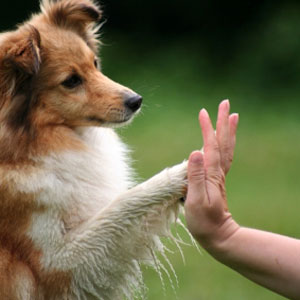Teaching a dog tricks is easy, especially if it is young. Therefore, it is ideal to start teaching your dog tricks when it is just a puppy. To do this, you need patience, as dogs have individual personalities and some are easier to train than others. Here are some tips on how to teach your puppy basic tricks.
Instructions
-
How to Teach a Puppy Basic Tricks
- 1
Teach your dog to sit by gently pushing on its lower back and butt area and repeating “sit, sit”. Do not force your puppy to do so. However, the moment it sits after you say the comment, even if the dog does so for only a moment, give it a treat, pet it, kiss it and show the dog affection and respond verbally very enthusiastically.
- 2
Make your puppy lie down. When it is sitting, rub its side and then its belly and push on it gently until it lies down–all while repeating “lie down, lie down”. If the dog has done so, reward the puppy with a treat and an encouraging word and gesture. Repeat the process until the dog lies down on comman
- 3
Teach your puppy to roll over by saying “roll over” while gently massaging his or her belly when the dog is lying down on its side and rolling his or her body gently until the animal is lying on its opposite side. Then reward them with a treat or an encouraging word and gesture. Repeat until the dog does so without you touching them.
- 4
Teach your puppy to shake hands. Lift one of the dog’s paws when it is sitting and say “shake”. Then give the dog a treat and an encouraging word or gesture. Repeat until the dog raises a paw on command. You can also immediately repeat the trick using the other paw, and say “other hand”.
- 5
Teach your puppy to “sing” by saying “sing” and then emitting the equivalent of a dog wail yourself. The dog will learn that this means “singing” and the high pitch will also encourage it to wail in solidarity. If and when the dog does, reward it and repeat this trick until it does it on its own. This is actually a very basic instinct dogs possess as part of their genetic makeup, as they decend from wolves, who howl in response to other wolf howls–to show solidarity.
- 1

